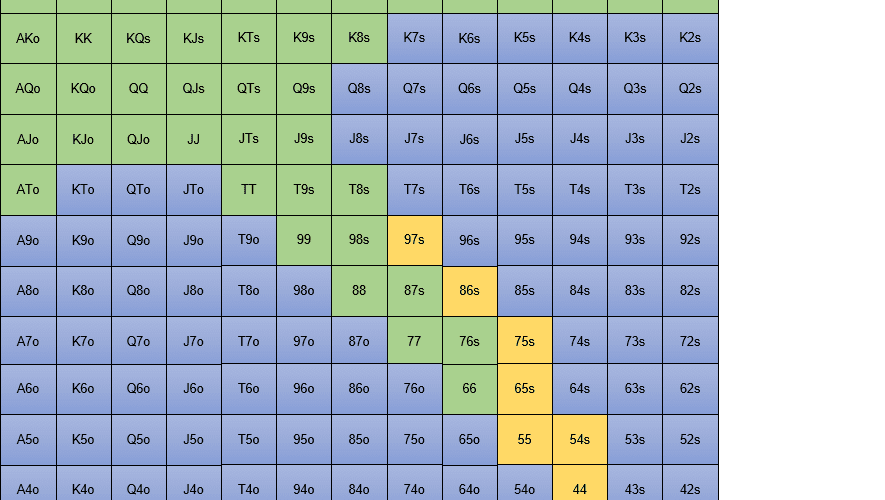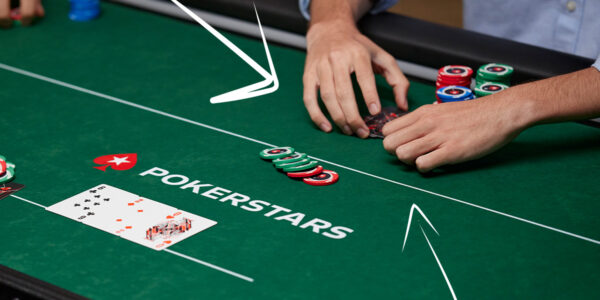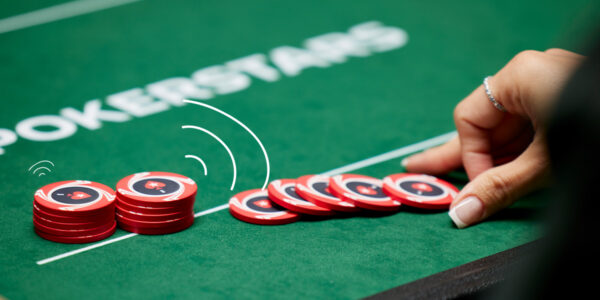Taking Advantage of Poker Players That Limp Preflop
Most players are aware that limping as the first player to enter the pot is a theoretical mistake, but how exactly do we take advantage of players who choose this line preflop?
Attacking is Lucrative
The feeble thing about limping ranges is that they are normally capped. This means that a limper will rarely have the very strongest possible starting hands. This fact gives us the security that when we raise to try to isolate a limper, we are rarely going to run into the nuts or get re-raised. For this reason, we should attack with a wide range, especially when we have position. Secondly, limpers are normally not the most skilled opponents and so our edge from playing post-flop against them is going to be sizable. The icing on the cake of isolation raising is that most limpers will call a raise and then meekly check fold when they miss the flop. If Villain was a combative player who was going to make life difficult post-flop, the chances are that we would have entered the pot for a raise in the first place.
Scanning The Table
One thing we might want to be careful about is running into players behind us who might catch on to how wide we are isolating a limper and 3-Bet us lighter. In this case, we still want to attack wide, but can keep our sizing down so that we leave more room to defend and lose less when we are forced to fold. This is smart forward planning.
On the other hand, if there are passive calling-station players behind us, we might want to isolate the limper with a larger sizing in order to help us achieve our goal of a heads-up pot against the weaker opponent. On tables where the players behind us are inactive and likely to get out of the way, we can again use a large sizing to apply maximum punishment to the limper. Finally, not all limpers are placid. Some will trap limp and re-raise. If you ever witness this happen, take a note! It will help you avoid making marginal isolation raises against this opponent in the future.
Limping Behind
It is not mandatory to play raise or fold in these spots. Although we condemned open-limping at the beginning of this article, we have no qualms about limping behind with the right sort of hands on the right table. The reason that limping behind is sometimes permissible is that the limper before us has reduced our chances of getting heads-up or taking down the blinds any way and so much of the usual impetus to raise has been eliminated. On tables where our isolation attempt is likely to be met by calls from loose players still to act, we might want to take some weak but prosperous hands such as 87s and 44 and limp them behind instead. On tables where our isolation raise is going to get 3-Bet often, we might also want to limp behind some of these hands that would much rather not face a 3-Bet.
Sizing
The default size for an isolation raise should be around 4BB in position and 5BB out of position.
The reason for generally preferring a larger raise size when making isolation raises is that the pot odds of all players left to act have just improved. There is more dead money and implied odds type hands that perform well multi-way like suited connected cards and smaller pairs are now incentivised to come along for the ride. This is something we would like to discourage.
As additional limpers enter the pot, we can increase this by an additional big blind for each limper. If there are very loose players behind we might want to pretend that they are already in the pot and increase our sizing to deter them from ruining our heads up party with the limper, especially when we hold a strong hand like KQo that has a strong preference for playing against just one opponent.
On tables where there are rampant 3-bettors ahead of us, sizing down to 3BB-3.5BB is perfectly respectable.
Let’s try some example hands now and put our new found knowledge to the test.
Example 1
In this first hand, Hero is in the CO in a 6-max cash game and a loose-passive recreational player limps into the pot in the HJ. Behind us, there are a couple of aggressive regulars who have rampant 3-Bet tendencies. In a spot like this, I would recommend raising to 3.25BB – a somewhat small ISO size – and tightening our range up a little. We should play in the following way:


Example 2
In this next hand we find ourselves in the SB and a very passive calling station limps on the BU. We have seen this player act very meekly and just try to see flops in order to bink a big hand. He is very happy to get out of the way if he misses the flop. In the BB there is a tighter recreational player who will call small raises quite wide but is timid as the pot gets bigger. Our strategy? A very wide isolation range with a huge size.


Example 3
In our final example we are on the BU and two players limp in. The first is a wild maniac who will always limp call and occasionally make crazy moves post-flop. The second is an unknown, but thus far, tight player. There is another loose maniac in the SB, and finally, a nittier guy in the BB. Apart from never ever leaving this juicy game, how should we plan here? Well, our chances of getting heads up are miniscule. We are extremely likely to go three or four way and have almost no fold equity post-flop. The upshot is that it is much better to simply creep into the pot and take a cheap look with most hands before we bloat a pot that we will usually need to give up on. With the very best hands, we can of course raise to isolate, and our sizing is going to need to be enormous to thin the field successfully. Have a look at the strategy below:


Summary
- Isolate wider when the limper is passive, the table is tighter and when there are not too many active 3-bettors behind.
- Isolate tighter when there are aggressive players behind, or very little chance of getting heads up.
- Limp behind with hands that function well multiway when fold equity seems to be low.











